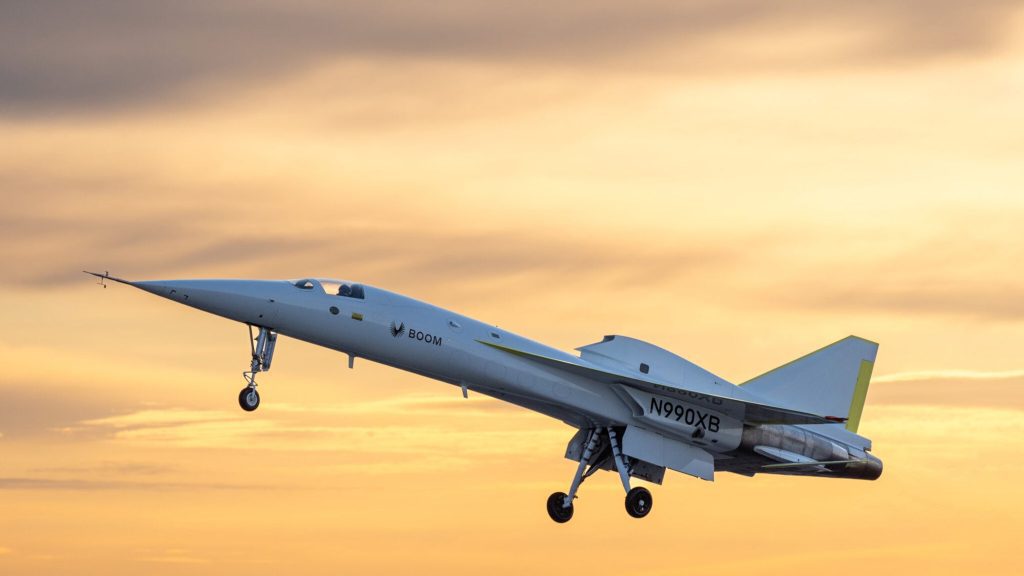The competition to restart commercial supersonic travel is underway, and one company has made significant progress. On Friday, Boom Supersonic announced the successful initial flight of its XB-1, a prototype jet built to test the plane’s construction materials and aerodynamic designs meant for the company’s future full-size passenger aircraft, Overture.
XB-1 took off from Mojave Air & Space Port in Mojave, California on March 22—near the site where the Bell X-1 became the first plane to break the sound barrier in 1947. Boom’s test craft flew for about 12 minutes at a maximum altitude of 7,120 feet, achieving a top speed of 238 knots (273 mph) with 12,300-pounds of thrust in the process.
Interestingly, XB-1 is powered by three GE J85-15 turbojet engines, which have been around for over 20 years. That means XB-1 is far slower than the roughly 741 mph required to achieve Mach 1, but that was never the goal for Friday’s takeoff. Instead, Boom’s engineers intended the flight to showcase technology such as the cockpit’s augmented reality vision system, as well as a frame almost entirely built using carbon fiber composite materials. The company is currently developing its sustainable engine fuel, 35,000-lb thrust Symphony jet engine meant for the final Overture plane.
[Related: This test plane could represent a major step towards supersonic commercial flights.]
“I’ve been looking forward to this flight since founding Boom in 2014, and it marks the most significant milestone yet on our path to bring supersonic travel to passengers worldwide,” Boom Supersonic founder and CEO Blake Scholl said on Friday.
It was a long road to this weekend’s milestone, however. Boom Supersonic first unveiled the XB-1 prototype back in late 2020, with an eye to begin test flights the following year. While that development phase was ultimately delayed until Friday’s event, such pushbacks are commonplace in the aviation industry, however, especially when attempting to revitalize supersonic travel.
[Related: All your burning questions about sustainable aviation fuel, answered.]
The nearly 63-foot-long XB-1 is just one-third the size of Overture, the company’s proposed commercial supersonic jet. If completed, Overture will zip 64-80 passengers around the world at speeds as fast as Mach 1.7 (about 1,260 mph), around twice the speed of current subsonic planes. That’s still a big “if,” of course, given that the public has only seen is a one-third scale model of the Symphony engine revealed last year at the Paris Air Show. And given the time it took to get XB-1 off the ground, Boom Supersonic’s proposed 2029 debut for the Overture seems a bit optimistic.
[Related: NASA plans to unveil experimental X-59 supersonic jet.]
Still, plenty of people seem pretty confident about Boom Supersonic’s chances of making the Overture a reality. The company reports it already has received 130 orders and pre-orders from American Airlines, United Airlines, and Japan Airlines. It also previously received a $60 million influx of cash from a partnership with the US Air Force—a reminder of the military’s own interest in the process of developing faster-than-sound air travel.









